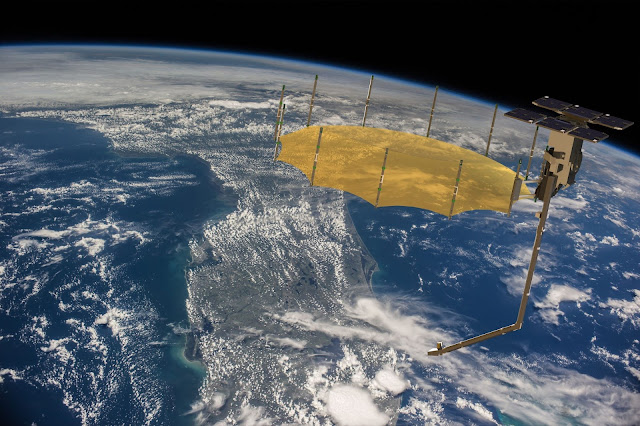Synthetic Aperture Radar Image Contains Information About Both The Location Of The Surface Reflected In A Pixel And The Intensity Of That Reflection
.jpg) |
| Synthetic Aperture Radar (SAR) |
An electromagnetic pulse is transmitted from the radar
sensor and returned reflected by the surface to be imaged. The echoes are
recorded and digitized by the radar system electronics. If well ordered, this
sequence of signals simulates the performance of a large one-dimensional phased
array antenna. This process is known as aperture synthesis.
On the basis
of product type, the global Synthetic
Aperture Radar (SAR) Market is classified into Space-based SAR, Air based
SAR. Synthetic Aperture Radar
(SAR) works by utilizing radio waves to create detailed images of the Earth's
surface.
A radar's transmitted signal can be polarized either
horizontally (HH) or vertically (VV). Most SAR systems use both transmit and
receive polarizations simultaneously to maximize imaging capability. The
polarization of the radar wave changes when it interacts with different
materials, such as vegetation, snow, and water. Some objects, such as water,
reflect both HH and V-polarized waves with the same intensity. This can be
exploited to separate overlapping returns in SAR images, which are then
recombined into a single image. The Synthetic Aperture Radar (SAR) system electronics
control which polarizations are used in each transmitted pulse and which are
received in the receive path.
The spatial arrangement of backscattered returns is
determined by the distance from the nadir point to the radar sensor. The
distance from the nadir to a point on the ground is called the slant range.
This is related to the 'look angle' of the radar, which determines the image's
foreshortening and other geometric distortions. Synthetic
Aperture Radar (SAR) can also be influenced by the wavelength of the transmitted
radar pulse. Wavelength affects penetration depth into forests and other rough
surfaces. A longer wavelength can penetrate into water and ice much more easily
than the same wavelength of a short pulse.
Another factor influencing imaging is the geometry of the
radar system and its sensor. A Synthetic
Aperture Radar (SAR) with a small look
angle may show significant foreshortening, where the slope of the terrain
between points A and B appears steeper in a SAR image than it would if the
radar were looking directly at that slope from position A. A radar-image
plane is a mathematical plane that intersects with the plane of incidence of
the radar wave.
When viewed from the direction of flight, a Synthetic Aperture Radar (SAR) images are most like familiar
optical ones. As the radar illumination tends to be downward, shadows will
appear most like their optical counterparts. Exceptions to this are when the
scene is of a reflective surface, such as a mirror, or where the roughness of a
surface consists of relief less than the radar wavelength. Then, the reflection
from such a surface behaves as a smooth mirror, and images of items beyond it
are visible within its shadow. In such cases, the reflections are double-bounce
backscatter and are not reflected' away from the radar.
The NASA-ISRO Synthetic Aperture Radar (NISAR) mission
payload is being transported to India on June 2022. This is a combined program
between NASA and ISRO for observing the whole land mass, including the Indian Ocean
and Polar cryosphere region.


Comments
Post a Comment